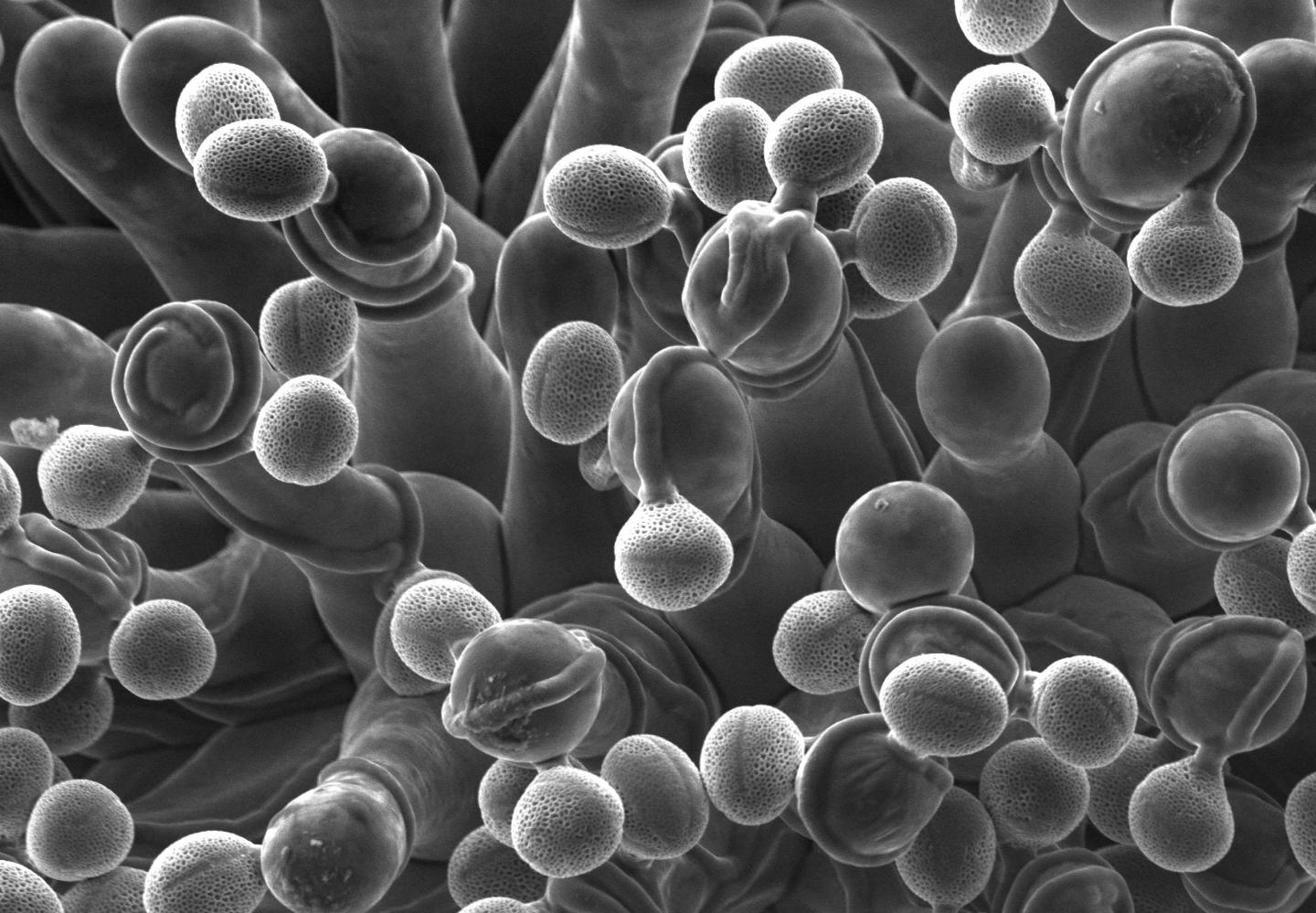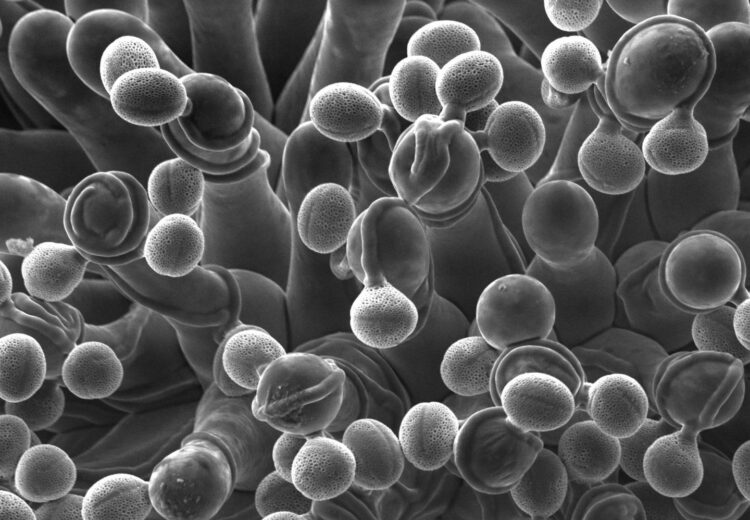New findings reveal the unexpected role of an enzyme called KATANIN in guiding the growth of pollen tubes in flowering plants

Credit: Lucie Riglet (CC BY 4.0)
New insight on how an enzyme ensures the correct growth of pollen tubes in flowering plants has been published today in the open-access journal eLife.
The study reveals an unexpected role of KATANIN in moderating the mechanical properties of the papilla cell wall in Arabidopsis thaliana (A. thaliana), thereby preventing disordered pollen tube growth and allowing the tube to find its correct path to the underlying female plant tissues. These findings suggest that KATANIN has likely played a major role in the success of flowering plants on earth more widely.
Seeds are produced in flowering plants when male and female germ cells called gametes fuse together. Male gametes are contained in the pollen grain while female gametes are found in the ovules, which are embedded in a female reproductive organ called the pistil. For successful seed production to happen, pollen grains need to meet with the surface of the pistil, which is composed of a layer of elongated cells called papillae. When a pollen grain lands on a papilla, it rehydrates and then produces a tube that will carry the male gametes toward the ovules.
Pollen tubes grow first within the papilla cell wall, exerting a physical pressure on the cell. After crossing the papilla layer, they then grow in the intercellular space of underlying tissues. The pistil then produces compounds that guide the pollen tube to the ovules where it reaches the female gametes. But how the tube orients itself when it emerges from the pollen at the papilla surface remains unknown.
“It is striking that, whatever the position of the flower and hence the pistil on the stem, the pollen tube grows to the base of the papilla in the direction of the ovules. We wanted to explore the mechanisms that allow for this proper orientation of pollen tubes on the papilla cells,” says lead author Lucie Riglet, who was a PhD student in senior author Thierry Gaude’s lab at the Laboratory of Plant Reproduction and Development, ENS Lyon, France, at the time the study was carried out, and is now a postdoctoral researcher at the Sainsbury Laboratory, University of Cambridge, UK.
Mechanical forces are known to play a major role in plant cell shape by controlling the orientation of cortical microtubules, which in turn mediate the deposition of cellulose microfibrils. For their study, Riglet and her team combined imaging, genetic and chemical approaches to show that the enzyme KATANIN, which cuts microtubules, also acts on cellulose microfibril orientation and confers mechanical properties to the papilla cell wall that allow for correct pollen tube orientation.
“By forcing the pollen tubes to take the right direction from their early places in the papilla, KATANIN has likely played a major role in the success of flowering plants on earth by promoting fertilisation,” explains senior author Thierry Gaude, Group Leader at the Laboratory of Plant Reproduction and Development, ENS Lyon. “As KATANIN is found in most organisms, including humans, it is possible that the enzyme plays a role in regulating mechanical properties in other processes – but this is a fascinating question that remains to be explored.”
###
Reference
The paper ‘KATANIN-dependent mechanical properties of the stigmatic cell wall mediate the pollen tube path in Arabidopsis’ can be freely accessed online at https:/
Media contact
Emily Packer, Media Relations Manager
eLife
[email protected]
01223 855373
About eLife
eLife is a non-profit organisation created by funders and led by researchers. Our mission is to accelerate discovery by operating a platform for research communication that encourages and recognises the most responsible behaviours. We work across three major areas: publishing, technology and research culture. We aim to publish work of the highest standards and importance in all areas of biology and medicine, including Plant Biology, while exploring creative new ways to improve how research is assessed and published. We also invest in open-source technology innovation to modernise the infrastructure for science publishing and improve online tools for sharing, using and interacting with new results. eLife receives financial support and strategic guidance from the Howard Hughes Medical Institute, the Knut and Alice Wallenberg Foundation, the Max Planck Society and Wellcome. Learn more at https:/
To read the latest Plant Biology published in eLife, visit https:/
Media Contact
Emily Packer
[email protected]
Original Source
https:/
Related Journal Article
http://dx.





